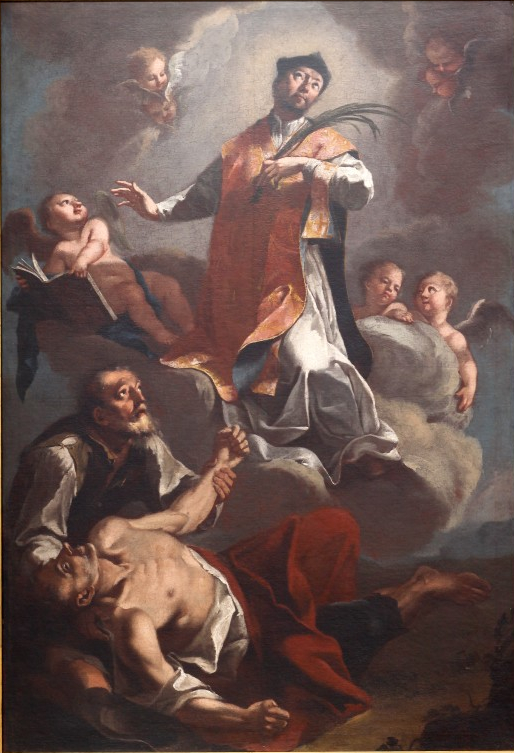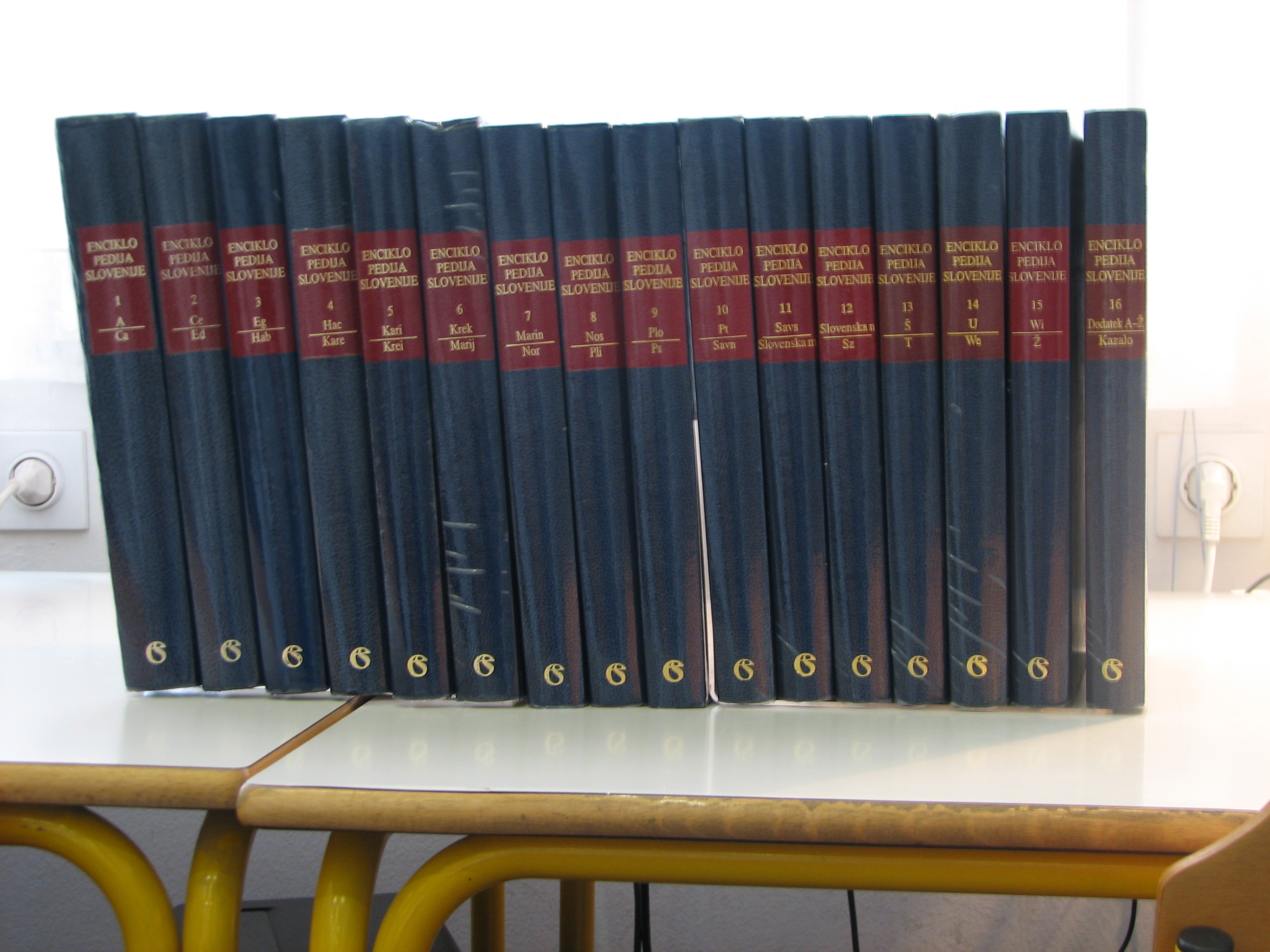|
Anton Cebej
Anton Cebej, or Zebey (23 May 1722, Ajdovščina – after 1774) was a Slovenian painter, in the Baroque style. Biography Very little is known about his life. The information that is available is derived entirely from a history of his works, the first of which appeared in 1750, and the last in 1774. He lived in Ljubljana for the bulk of his career, but he was apparently not part of the artistic community there. His paintings show an obvious Venetian influence, but certain stylistic elements suggest that he had contact with and may have taken lessons from Giulio Quaglio and Valentin Metzinger, the latter of whom was particularly influential. After Metzinger's death in 1759, Cebej also took on some of his clients. In the 1760s, he reached what is generally considered to be his artistic peak. By the 1770s, his paintings had become simpler, with fewer figures and less dramatic feeling. His frescoes underwent a similar change. He was the only artist there at the time who was p ... [...More Info...] [...Related Items...] OR: [Wikipedia] [Google] [Baidu] |
Ajdovščina
Ajdovščina (; it, Aidussina,trilingual name "Haidenschaft, Aidussina, Ajdovščina" inGemeindelexikon, der im Reichsrate Vertretenen Königreiche und Länder. Bearbeit auf Grund der Ergebnisse der Volkszählung vom 31. Dezember 1900. Herausgegeben von der K.K. Statistischen Zentralkommission. VII. Österreichisch-Illyrisches Küstenland (Triest, Görz aund Gradiska, Istrien). Wien 1906/ref> german: Haidenschaft) is a town in the Vipava Valley (''Vipavska dolina''), Slovenia. It is the administrative seat of the Municipality of Ajdovščina. History The first mentions of Ajdovščina go back to circa 2000 BC. In the Bronze Age and the Iron Age a fortified settlement stood on the nearby hill of Gradišče. In the early period of the Roman Empire, after a road was built from Aquileia towards Emona, a small post and goods station known as ''mansio Fluvio Frigido'' stood on the site of today's Ajdovščina. In the late 3rd century and the early 4th century a fortification system, ... [...More Info...] [...Related Items...] OR: [Wikipedia] [Google] [Baidu] |
Slovenia
Slovenia ( ; sl, Slovenija ), officially the Republic of Slovenia (Slovene: , abbr.: ''RS''), is a country in Central Europe. It is bordered by Italy to the west, Austria to the north, Hungary to the northeast, Croatia to the southeast, and the Adriatic Sea to the southwest. Slovenia is mostly mountainous and forested, covers , and has a population of 2.1 million (2,108,708 people). Slovenes constitute over 80% of the country's population. Slovene, a South Slavic language, is the official language. Slovenia has a predominantly temperate continental climate, with the exception of the Slovene Littoral and the Julian Alps. A sub-mediterranean climate reaches to the northern extensions of the Dinaric Alps that traverse the country in a northwest–southeast direction. The Julian Alps in the northwest have an alpine climate. Toward the northeastern Pannonian Basin, a continental climate is more pronounced. Ljubljana, the capital and largest city of Slovenia, is geogr ... [...More Info...] [...Related Items...] OR: [Wikipedia] [Google] [Baidu] |
Baroque
The Baroque (, ; ) is a style of architecture, music, dance, painting, sculpture, poetry, and other arts that flourished in Europe from the early 17th century until the 1750s. In the territories of the Spanish and Portuguese empires including the Iberian Peninsula it continued, together with new styles, until the first decade of the 19th century. It followed Renaissance art and Mannerism and preceded the Rococo (in the past often referred to as "late Baroque") and Neoclassical styles. It was encouraged by the Catholic Church as a means to counter the simplicity and austerity of Protestant architecture, art, and music, though Lutheran Baroque art developed in parts of Europe as well. The Baroque style used contrast, movement, exuberant detail, deep colour, grandeur, and surprise to achieve a sense of awe. The style began at the start of the 17th century in Rome, then spread rapidly to France, northern Italy, Spain, and Portugal, then to Austria, southern Germany, and Russia ... [...More Info...] [...Related Items...] OR: [Wikipedia] [Google] [Baidu] |
Ljubljana
Ljubljana (also known by other historical names) is the capital and largest city of Slovenia. It is the country's cultural, educational, economic, political and administrative center. During antiquity, a Roman city called Emona stood in the area. Ljubljana itself was first mentioned in the first half of the 12th century. Situated at the middle of a trade route between the northern Adriatic Sea and the Danube region, it was the historical capital of Carniola, one of the Slovene-inhabited parts of the Habsburg monarchy. It was under Habsburg rule from the Middle Ages until the dissolution of the Austro-Hungarian Empire in 1918. After World War II, Ljubljana became the capital of the Socialist Republic of Slovenia, part of the Socialist Federal Republic of Yugoslavia. The city retained this status until Slovenia became independent in 1991 and Ljubljana became the capital of the newly formed state. Name The origin of the name ''Ljubljana'' is unclear. In the Middle Ages, both the ... [...More Info...] [...Related Items...] OR: [Wikipedia] [Google] [Baidu] |
Giulio Quaglio The Younger
Giulio Quaglio the Younger (1668–1751) was an Italian Baroque painter. He was part of the large Quaglio pedigree of Italian artists involved in architecture, indoor fresco decoration, and scenography ( stage design) for the court theaters. He was born and died in Laino, a mountain village at Como. Giulio II was involved in fresco decoration in Friuli, including for the chapel of Monte di Pietà at Udine. His most highly valued work is the painting of Saint Nicholas' Cathedral in Ljubljana. He also painted the central hall of Meerscheinschlössl in Graz. He had two sons, Domenico and Giovanni Maria Quaglio. Gallery File:Giulio Quaglio the Younger - Kristus Odrešenik.jpg, ''Christ the Savior'' (1721 - 1723) File:Giulio Quaglio - Mati Božja z detetom med svetniki.jpg, ''Mother of God with child among saints'' (1702) File:Giulio Quaglio the Younger - Obglavljenje sv. Barbare.jpg, ''The beheading of St. Barbara'' (1721 - 1723) File:Giulio Quaglio the Younger - Kristus s sv. D ... [...More Info...] [...Related Items...] OR: [Wikipedia] [Google] [Baidu] |
Valentin Metzinger
Jean-Valentin Metzinger (19 April 1699, Saint-Avold – 12 March 1759, Ljubljana) was a French-born Austrian-Slovenian painter, in the Baroque style. Life and work His ancestors were originally from Italy. He was one of twelve children born to François Metzinger (died 1721), and his wife, Maria Magdalena née Valentini; including his twin brother, Jean-Philippe. Where he had his first painting lessons is unknown. He later studied in Bologna, Venice and Rome, but there is no record of attendance at any academies. In Rome, his primary contacts were with other French artists, although he seems to have been influenced by Guido Reni, Peter Paul Rubens and Bartolomé Esteban Murillo, among others. Some speculations have centered on time in Germany, but those influences are not apparent until much later in his life."Metzinger, Janez ... [...More Info...] [...Related Items...] OR: [Wikipedia] [Google] [Baidu] |
Fresco
Fresco (plural ''frescos'' or ''frescoes'') is a technique of mural painting executed upon freshly laid ("wet") lime plaster. Water is used as the vehicle for the dry-powder pigment to merge with the plaster, and with the setting of the plaster, the painting becomes an integral part of the wall. The word ''fresco'' ( it, affresco) is derived from the Italian adjective ''fresco'' meaning "fresh", and may thus be contrasted with fresco-secco or secco mural painting techniques, which are applied to dried plaster, to supplement painting in fresco. The fresco technique has been employed since antiquity and is closely associated with Italian Renaissance painting. The word ''fresco'' is commonly and inaccurately used in English to refer to any wall painting regardless of the plaster technology or binding medium. This, in part, contributes to a misconception that the most geographically and temporally common wall painting technology was the painting into wet lime plaster. Even in app ... [...More Info...] [...Related Items...] OR: [Wikipedia] [Google] [Baidu] |
Croatia
, image_flag = Flag of Croatia.svg , image_coat = Coat of arms of Croatia.svg , anthem = "Lijepa naša domovino"("Our Beautiful Homeland") , image_map = , map_caption = , capital = Zagreb , coordinates = , largest_city = capital , official_languages = Croatian , languages_type = Writing system , languages = Latin , ethnic_groups = , ethnic_groups_year = 2021 , religion = , religion_year = 2021 , demonym = , government_type = Unitary parliamentary republic , leader_title1 = President , leader_name1 = Zoran Milanović , leader_title2 = Prime Minister , leader_name2 = Andrej Plenković , leader_title3 = Speaker of Parliament , leader_name3 = Gordan Jandroković , legislature = Sabor , sovereignty_type ... [...More Info...] [...Related Items...] OR: [Wikipedia] [Google] [Baidu] |
Enciklopedija Slovenije
The ''Encyclopedia of Slovenia'' ( sl, Enciklopedija Slovenije) is a Slovene-language encyclopedia that contains topics related to Slovenia. It was published from 1987 to 2002 in 16 volumes by Mladinska knjiga in cooperation with the Slovenian Academy of Sciences and Arts.''Enciklopedija Slovenije''. Ljubljana. Mladinska knjiga, 1987-2002. ; The editors of the encyclopedia were Marjan Javornik, Dušan Voglar, and Alenka Dermastia, and the editors of special topics were Rajko Pavlovec, Blaž Resman, Janez Stergar, Zdravko Mlinar, Peter Weiss, Tone Wraber, Aleš Krbavčič, and Tone Ferenc. The first volumes were published in a print run of 30,000, but the print run was reduced to 15,000 for later volumes. For its overall work on the ''Encyclopedia of Slovenia'', the publisher Mladinska knjiga received the Golden Order of Freedom of the Republic of Slovenia, the highest-ranking order awarded in Slovenia. Volumes # A–Ca, 1987, xvii + 421 pages, 30,000 copies # ... [...More Info...] [...Related Items...] OR: [Wikipedia] [Google] [Baidu] |
National Museum Of Slovenia
The National Museum of Slovenia ( sl, Narodni muzej Slovenije) is located in Ljubljana, the capital of Slovenia. It is located in the Center district of the city near Tivoli City Park. Along with the Slovenian Museum of Natural History, located in the same building, the National Museum of Slovenia is the country's oldest scientific and cultural institution. The museum has an extensive collection of archaeological artefacts, old coins and banknotes (in the numismatics department on the ground floor) and displays related to the applied arts. In 2021 it's been given the golden Order for Exceptional Merits by the president of Slovenia, Borut Pahor. History The museum was founded in 1821 as the " Estate Museum of Carniola" (german: Krainisch Ständisches Museum). Five years later, the Austrian Emperor Francis I decided to personally sponsor the museum and ordered its renaming to "Provincial Museum of Carniola". In 1882, the museum was renamed to "Provincial Museum of Carniola ... [...More Info...] [...Related Items...] OR: [Wikipedia] [Google] [Baidu] |
Slovenian Painters
Slovene or Slovenian may refer to: * Something of, from, or related to Slovenia, a country in Central Europe * Slovene language, a South Slavic language mainly spoken in Slovenia * Slovenes The Slovenes, also known as Slovenians ( sl, Slovenci ), are a South Slavic ethnic group native to Slovenia, and adjacent regions in Italy, Austria and Hungary. Slovenes share a common ancestry, culture, history and speak Slovene as their na ..., an ethno-linguistic group mainly living in Slovenia * Slavic peoples, an Indo-European ethno-linguistic group * Ilmen Slavs, the northernmost tribe of the Early East Slavs {{Disambiguation Language and nationality disambiguation pages ... [...More Info...] [...Related Items...] OR: [Wikipedia] [Google] [Baidu] |
Slovenian Male Painters
Slovene or Slovenian may refer to: * Something of, from, or related to Slovenia, a country in Central Europe * Slovene language, a South Slavic language mainly spoken in Slovenia * Slovenes, an ethno-linguistic group mainly living in Slovenia * Slavic peoples, an Indo-European ethno-linguistic group * Ilmen Slavs The Novgorod Slavs, Ilmen Slavs (russian: Ильменские слове́не, ''Il'menskiye slovene''), or Slovenes (not to be confused with the Slovenian Slovenes) were the northernmost tribe of the Early Slavs, and inhabited the shores of L ..., the northernmost tribe of the Early East Slavs {{Disambiguation Language and nationality disambiguation pages ... [...More Info...] [...Related Items...] OR: [Wikipedia] [Google] [Baidu] |



_self-portrait.jpg)

.jpg)

